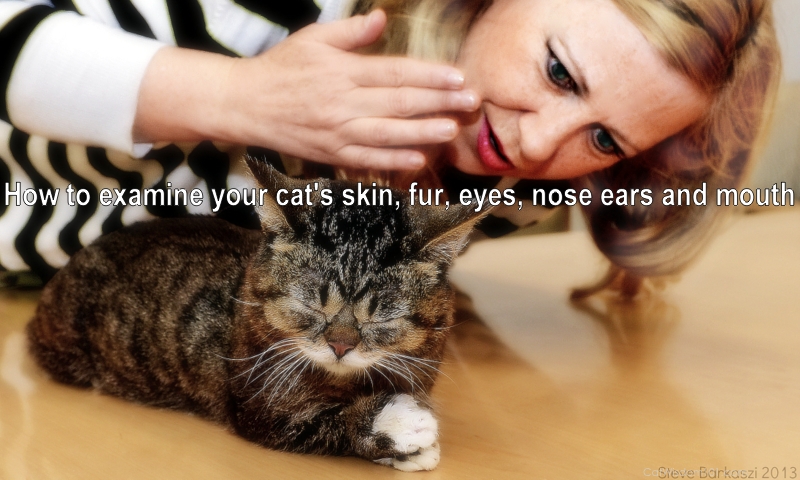
How to Examine Your Cat’s Skin, Fur, Eyes, Ears, Nose, and Mouth
How to Examine Your Cat’s Skin, Fur, Eyes, Ears, Nose, and Mouth
Monthly Physical Exams – Take an Active Role in Your Cat’s Health – Part Three
The third part of our Physical Exam Series covers your cat’s skin, fur, eyes, ears, nose, and mouth. From external parasites to respiratory infections, these parts of your cat’s anatomy can provide you with a wealth of information about her overall health.
Skin & Fur
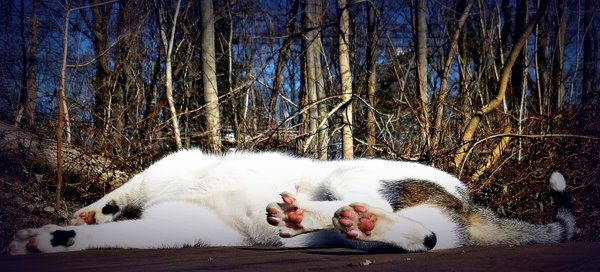
Often hidden under a thick layer of fur, the skin is a surprisingly easy organ to overlook. In many cases, skin related diseases go unnoticed unless they involve notable hair loss.
First you want to look at the coat itself. A healthy coat is soft and evenly distributed. Abnormalities of the coat would include:
- Brittleness or dryness
- Areas of hair loss
- Changes in color or texture
- Greasiness
Some conditions that can cause coat abnormalities include external parasite infestations, malnutrition or malabsorption, and thyroid dysfunction. To look at the skin, simply use your fingers to slowly brush against the direction of hair growth, so you can see the skin underneath. You will want to look out for:
- Redness, Scabs, Wounds, Lumps, Bumps, or Growths, Flaking, Fleas and ticks
- Most other external parasites are not readily visible and require further diagnostics to identify
- Keep in mind that just because you do not see any fleas, it does mean that your pet does not have fleas. Editor’s note: brushing a flea comb along a cat’s back from neck to base of tail will show specks of flea dirt.
Eyes
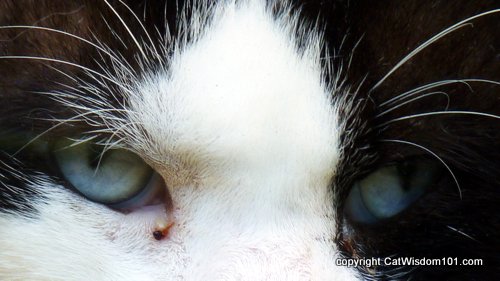
We spend a lot of time looking into our pets’ eyes, but that doesn’t mean we are really looking at them. Your cat’s eyes can reflect changes in neurological, respiratory, and cardiovascular health, just to name a few. Healthy eyes are clear, symmetrical, and free of discharge and swelling. Ocular signs of disease include:
- Discharge or excessive tearing
- Uneven pupil size
- Uneven size or shape of eyes
- Swelling or redness of eyelids
- Growths
- Bulging appearance
- Sunken appearance
- Excessive blinking
- Pawing at eyes or rubbing eyes on objects
- Difficulty navigating around objects or other signs of impaired vision
- Keep in mind that animals are often adept at hiding signs of gradual vision loss
Ears
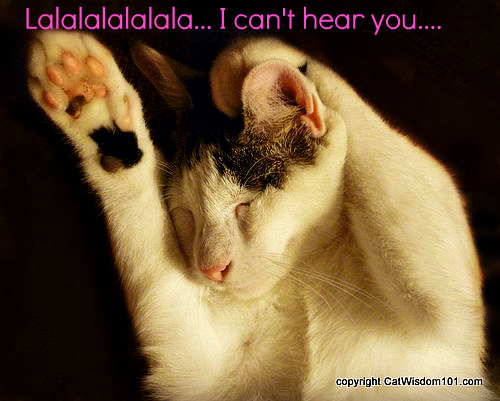
One of the best ways to check your cat’s ears is to use your nose. A healthy ear canal should not have an offensive odor. They may have that mild kitty smell, but if taking a sniff of your cat’s ears makes your wrinkle your nose you’ll want to have your vet take a closer look. Also do a visual check for dirt or ear debris. Cats can harbor mites in their ears, which tend to cause build up that resembles coffee grounds. Ear mites will also cause your cat’s ears to feel extremely itchy, causing frequent scratching that can lead to trauma on and around the ear. Also check the ear flaps, or pinnae. The ear pinnae should be relatively uniform in thickness and skin should be smooth with no signs of bleeding, scabbing, redness, or swelling.
Advanced hearing impairment is easy to recognize; perhaps your cat no longer comes running to the sound of his canned food being opened or her favorite crinkly toy. Early signs are more subtle and can include:
- Disorientation
- Impaired balance
- Head tilt
- Appearing startled when touched
- Some causes of hearing loss are treatable, so early detection is very important.
Nose
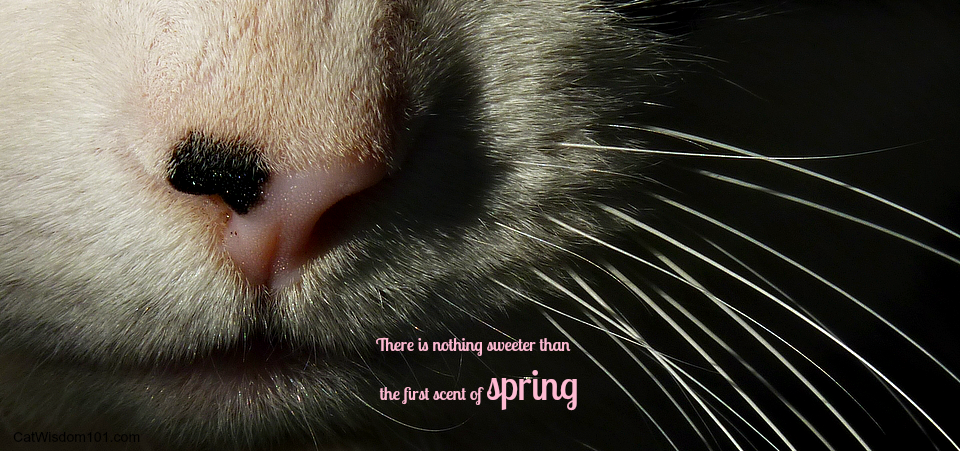
- The most common clinical sign you will see around the nose is discharge. Nasal discharge is especially common to see in cats who have just come from a shelter environment, where upper respiratory infections are extremely common. It can be surprisingly tricky to spot, as many cats are very quick to groom the discharge away. Nasal discharge is often accompanied by sneezing, but not always. In addition to nasal discharge, you’ll also want to keep an eye out for:
- Growths
- Changes in pigmentation
- Ulcers
- Redness and swelling
Mouth

It can be quite tricky to get a good look in a cat’s mouth, especially if he is not used to this experience. Be gentle, calm, and try to take in as much information as you can in the time you have. If your cat gets annoyed, just take a break. Treats can also help to make the experience more tolerable.Ideally, you should brush your cat’s teeth daily using a pet-safe toothpaste and toothbrush or finger brush. Even brushing once a week is better than not brushing at all. Many cats will tolerate having their teeth brushed if they are introduced to it slowly and the toothpaste is tasty enough. But, if you cannot brush your cat’s teeth, do try to have a look in his mouth at least once a month. Signs of an unhealthy mouth include:
- Offensive breath
- Tartar build up
- Red and/or swollen gums
- Broken teeth
- Masses or growths in the mouth or on the lips
- Ulcers inside the mouth or on the lips
- Swelling or asymmetry of the lips
- Abnormal gum color –blue, yellow, white, brick red are medical emergencies: Brown (many cats have normal areas of dark pigmentation on their gums, so get to know your cat’s coloring)
Unpleasant or odd smelling breath is often a sign of dental disease, but it can also signify other conditions, such as gastrointestinal disease or diabetes. Periodontal disease can also harm the heart, liver, and kidneys, so it is very important to keep your cat’s mouth healthy.
Editor’s Note: If you find anything of concern from your home exam, please contact your veterinarian.
Next Time: The final post in this series will look at musculoskeletal, abdominal, and urogenital health by
Georgia Barbush a registered vet tech from California.



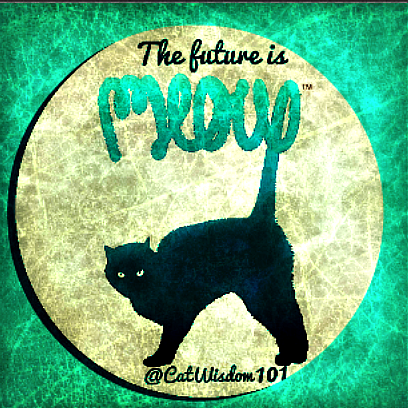
17 Comments
Angel
Ref A: 2A57FB9490074E7AAE315410ACC7B334 Ref B: HKGEDGE0422 Ref C: 2019-10-30T13:24:42Z
Big Thumbnails for Youtube Video
Guys, I found cools stuff related to video sharing.. This must view tools for youtuber attract free traffic to their video.. See it by ypur self how cools is this https://goo.gl/kKPi4J
Sean Nascimento
Hi. Just wanted to share with you the best of Europes festivals over the past year. I have visited most of these in the past and I can assure you that they are brilliant. Find time to relish in life and attend one of these this year. Looking forward to some more interesting posts on the Marina de Bolnuevo blog (www.marinedebolnuevo.co.uk). Have a great day.
Jerome Rosenkrans
Hi all, just seen this superb article about investing in a second home, after our visit to Marina de Bolnuevo in the summer. Check it out.
Kjelle Bus aka Charlie Rascal
My mm-person is too poking around on me and she even brush my toothies 🙂
Andrea
As you said, if you notice anything out of the ordinary check with your veterinarian. On a regular home exam I thought that my beloved Twygal’s eyes looked “odd.” When I looked closer I realized that the area on her nose between her eyes was swollen slightly. Turned out to be a nasal tumor, inoperable.
But you might also find something treatable, early on so take these exams seriously. Please.
Oui Oui
These are all great things to know! I’ve noticed if kitties are old, they clean themselves less and so their coats will become greasy over time, even if there is nothing physically wrong with them.
Skeeter and Izzy
We always get the poke, prod,sniff,look, touchy feely done on us too…even the Feral gang gets it now.It is worth it tho! Thanks again for providing such wonderful info!
Luvs Skeeter and Izzy and the Feral Gang + Peanut and Twig >^..^<
Layla Morgan Wilde
The ferals are allowing you to handle them? That’s awesome.
Angel Abby
You always have the most informative postings! Thank you for sharing this it could come in very handy.
Brian
Good stuff fur sure! Purrs and hugs from all of us.
Dana LaViolette-Maltais
Every year when the heat gets turned on in the house my furkids end up with flaky skin, I have a few humidifiers in the house and feed them both wet and dry food they are ,13,14 and 15 yrs old and perfectly healthy …knock on wood! Thanks for any advice ! Dana…=^..^=
da tabbie o trout towne
we bee told R breathz bee stinkin 24/8/375…we canna help it….we just loves perch flavored teeth paste !!!
Coccolino
This was very helpful, especially regarding the skin, since sometimes our cats have little scabs that are hidden.
Ms. Phoebe
My Mom is always cleaning the sleepiness out of my eyes which leads to checking my ears, nose, mouth. I close my ears tight yet she always seems to find a way to clean them. At least I am able to return the favor, as she gets her ‘treatment’ afterward- a turned back and/or death glare. MOL!
Sparkle
My human is always manhandling me! And yes, she does a lot of this – it’s part of the manhandling.
d'Artagnan Rumblepurr
Rumblemum is always poking around on me, I’m not gonna let her see this or she might poke more…